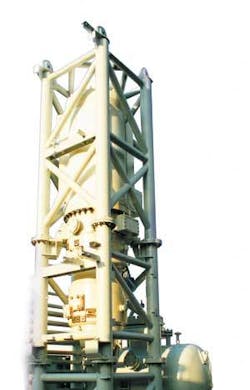New tools and technology for the offshore industry
Technology jointly developed by GE Oil & Gas and Aker Kvaerner has been selected for a pilot program in Norway’s Ormen Lange natural gas field that will be the first subsea compression project of its kind in the world. The contract for the pilot project was awarded to Aker Kvaerner by Norsk Hydro, one of the owners of the field.
Working with Aker Kvaerner, GE Oil & Gas has completed the conceptual design of a 12-MW subsea compressor, the largest ever developed for subsea applications, and is set to begin construction of the machine to be tested in the pilot project.
The aim of the pilot project is to evaluate whether a subsea compression station, at approximately 900 m of water depth, is a viable alternative to an offshore platform. In the past, it has not been profitable to exploit many natural gas subsea fields largely due to the cost of conventional offshore platforms.
“This project represents a major milestone in the development of subsea compression
technology,” says Libero Mele, regional general manager for Central and Northern Europe, GE Oil & Gas. “If the project produces the expected results, the Ormen Lange partners will have a cost-effective alternative to the originally planned offshore platform. This technology then could be applied to other subsea field developments, eliminating the need for offshore platforms.”
Subject to the Ormen Lange partners’ final approval, Aker Kvaerner’s subsea compression station pilot project will undergo controlled endurance tests from 2009 to 2011 at a gas treatment facility in Nyhamna, Norway.
To address the constraints of a subsea application, the new design has been focused on the optimization of the compression train, featuring a vertical and compact configuration to minimize the footprint and to facilitate machine operation with good drainage of possible liquid parts. Because reliability of the compression train is a key requirement for subsea applications, the equipment was designed to minimize the number of critical parts.
“Technology developments such as the new subsea compressor will lead to a significant increase in seabed oil field exploitation,” says Mele. “Developing and implementing reliable subsea technology is a major challenge, but it will produce huge benefits in the oil and gas industry in the years ahead.”
The new subsea compressor module is equipped with active magnetic bearings and includes a high-speed electric motor directly coupled with a centrifugal compressor in a vertical configuration.

